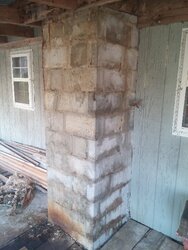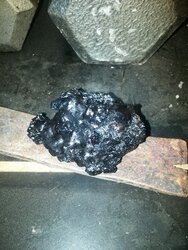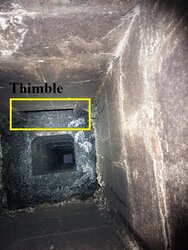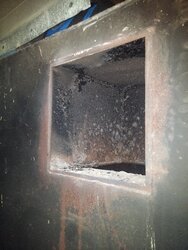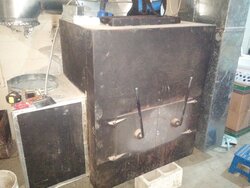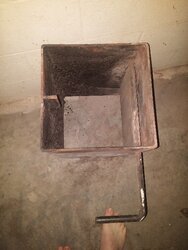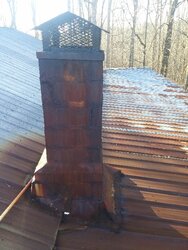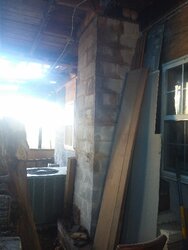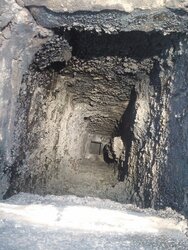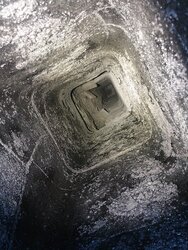Hello I am a college student,
When cleaning my parent's chimney, I found that multiple clay liners were destroyed. After this I asked my father if he had known of the issue, and his reply was he first noticed it 2 years ago. Following this I decided to get a picture of the chimney from the bottom clean out. I am relatively sure that the clean out is not built correctly since it is just an open box with the chimney sitting on top. The thimble for the stove vents directly into the box, and the flue gasses just kinda find there way up. This alarmed me quite a bit, and to get a better look at the situation I pulled the stove off the wall. Once the stove came off the wall I found it to have a 12 inch square collar coming out the back. The collar connects into a 12 inch square thimble with a damper built in. Following this I decided that the clay liner was in such terrible shape that I could not stay. After removing the liners I found a lot of creosote build up, and a big glob of it. Currently I do am not sure how to proceed. When looking online I found a lot of things talking about 316ti insulated liners, but have not figured out how to connect the square opening to the round liner. The block at the top of the chimney was not in the best shape, but the rest of the chimney seems to look good. It does not appear as if it has settled in any inappropriate way. I have pictures of everything, but do not know how to upload them.
When cleaning my parent's chimney, I found that multiple clay liners were destroyed. After this I asked my father if he had known of the issue, and his reply was he first noticed it 2 years ago. Following this I decided to get a picture of the chimney from the bottom clean out. I am relatively sure that the clean out is not built correctly since it is just an open box with the chimney sitting on top. The thimble for the stove vents directly into the box, and the flue gasses just kinda find there way up. This alarmed me quite a bit, and to get a better look at the situation I pulled the stove off the wall. Once the stove came off the wall I found it to have a 12 inch square collar coming out the back. The collar connects into a 12 inch square thimble with a damper built in. Following this I decided that the clay liner was in such terrible shape that I could not stay. After removing the liners I found a lot of creosote build up, and a big glob of it. Currently I do am not sure how to proceed. When looking online I found a lot of things talking about 316ti insulated liners, but have not figured out how to connect the square opening to the round liner. The block at the top of the chimney was not in the best shape, but the rest of the chimney seems to look good. It does not appear as if it has settled in any inappropriate way. I have pictures of everything, but do not know how to upload them.


